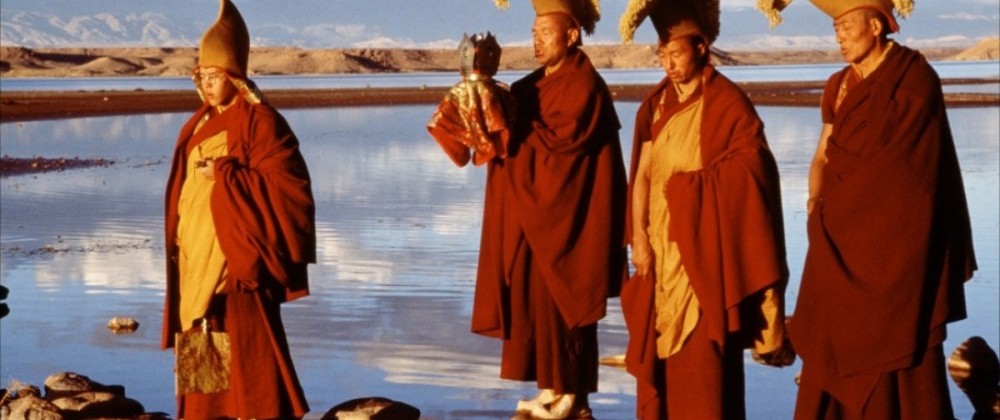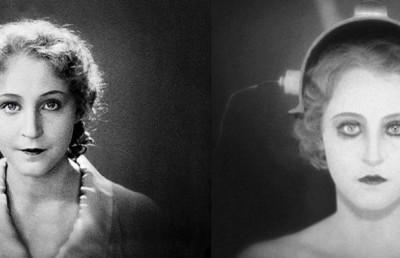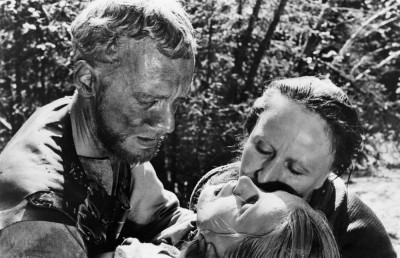Concerning a Mannequin in Tibet
Martin Scorsese’s Kundun

Two years ago when I found out that the next Martin Scorsese film was to be about the Dalai Lama it seemed oddly appropriate. With the subtle depth revealed in The Age of Innocence and the Dante-esque Casion , hope was alive that Scorsese was aging wisely. Unlike many of his contemporaries, Scorsese has always been able to make dynamic, personal films within the Hollywood system. Scorsese’s first vocation in life was to be a priest. This spiritual yearning was sublimated into his filmmaking. Many of Scorsese’s protagonists are Christ figures consumed in a battle between flesh and spirit and who eventually achieve redemption. Given this, the potential exploration of the Dalai Lama by Scorsese seemed promising. Well Kundun has arrived and the wait is over. The film is intended as a portrait of the fourteenth Dalai Lama and follows him from his childhood to his eventual fleeing of Tibet under Chinese occupation. Unfortunately Scorsese’s ‘portrait’ of the Dalai Lama seems more like a cold war postcard than a spiritual quest.
As many reviewers have pointed out the plot of the film is overtly simple and straight forward. The recent Hollywood-Tibetan cause has been blazing in full ignorance and Kundun continues this trend. Throughout the film a feeling of confusion arises as to whether it is truly a portrait of the Dalai Lama or a propaganda film against communism. The author of E.T , Melissa Mathison, who wrote the script, is one Hollywood’s leading lobbyists for the independence of Tibet. However, the sentiment here is not so much a concern with the independence of Tibet as it is with anti-communism. The cold war echo can be seen in the way the script plays on China’s communism to its fullest melodramatic extent. The film unfolds as a simple battle between good and evil, with all the characters falling into respective stereotypes. The Dalai Lama repeats ad nauseum that the Buddha represents compassion and peace. This reduction and oversimplification of the Buddha underscores another problem in the film: the dialogue. The western naivete evident in the dialogue make the characters appear shallow. None of the ideas the Dalai Lama presents are the least bit engaging, which seems odd for a spiritual leader of a country. Since we are expected to be engaged by what he represents outside of the film, this undermines the Dalai Lama as a subject. The Dalai Lama comes off as a figurehead without the head.
Another character who is butchered is Mao. After seeing some of Godard`s best work create discourses engaging Mao’s socio-political theories, it is hard to believe that Scorsese would stereotype Mao simply as a tricky bureaucrat. Mao, who sprouts phrases such as “Religion is poison,” is portrayed as evil personified. He claims that the Chinese merely want to help the Tibetans (yeah…You throw me the idle, I`ll throw you the whip.) Mao’s physical characteristics are also presented melodramatically. Whether accurate or not, Scorsese depicts Mao towering over the Dalai Lama like Goliath over David. The only difference is that this David owns a telescope and a film projector instead of a sling and a rock. Which is not to say that action is the solution, but that the film lacks subtlety. The silence has no tension or dynamism. Are we supposed to feel Dalai Lama’s spirit only through silence and emptiness?
At one point it is stated that, “The fourteenth Dalai Lama is a modern man.” Is this true because of his ideas or his hobbies? For neither of these issues are truly developed enough to validate this statement. In fact the selected events that shape his character are predominately western-oriented. In one clip we see him trying to drive a truck, which he crashes, while in others he is enjoying America`s biggest business: the movies. The footage wasted with the Dalai Lama watching an old Méliès film and newsreels is unforgivable. Even if this is something that the Dalai Lama really did, why is it so played up? The bombing of Hiroshima is one of the newsreel topics (no need to point out the cliché here). There is also his odd fixation with the telescope. There are several scenes where the Dalai Lama just sits, plays around with his glasses and looks into the telescope. In one of these sequences a camera trick is used to place the Dalai Lama`s eye onto the landscape seen in the lens of the telescope. This gives us a flat, meaningless image, much the same as the overall development of the Dalai Lama. It doesn’t help that the actor playing him lacks screen presence. Without this presence how are we to sympathize with the subject? Yes it’s the Dalai Lama, but why should we give in to such a shallow rendering? The end of the film is the most frustrating in this respect. After crossing the Indian border the Dalai Lama is asked who he is and responds, ‘‘I am a man like any other.’‘ At this point without any sympathy or sense of relation established to the Dalai Lama, the statement comes off as a pretension rather than a humbling gratification.
The cinematography of the film has been hailed as beautiful. Yet I don’t see how this claim can be made when the film’s cinematic approach is about as subtle as the musical score. Instead of selecting a proper aesthetic approach to the subject, Scorsese imposes an obvious Western aesthetic onto an Eastern culture. This lack of insight into a foreign subject works antithetically and produces visual clichés. Scorsese’s trademark moving camera is ever present, but so much so that it becomes less and less meaningful. By the end it feels like you’ve have been watching a two hour Kodak commercial. The audience, not challenged to look at anything, sees only what the camera sees. Yes the picture is polished and yes the colors are brilliant, but what film out of Hollywood does not have these features?
Philip Glass` soundtrack also meets the requirements of a typical Hollywood soundtrack. It tries to fill in for what is lacking visually. However, the consistently overpowering soundtrack does not compliment or counterpoint the imagery at all. In fact it is so redundant and obtrusive that the silence inherent in the Tibetan culture is ripped away and replaced by high Hollywood production values. This combination of two banalities leaves the audience seeing and hearing an overflowing empty chalice (if such an oxymoron could be imagined).
All of Scorsese’s films have stood apart from their contemporaries for their aesthetic and thematic innovation. Sadly, Kundun does not stand apart but amongst the crowd of Hollywood films now in theatres. This entry into Scorsese’s work is definitely his worst. Maybe Scorsese’s next film should be about his own search for redemption from this “sinful” mistake!











